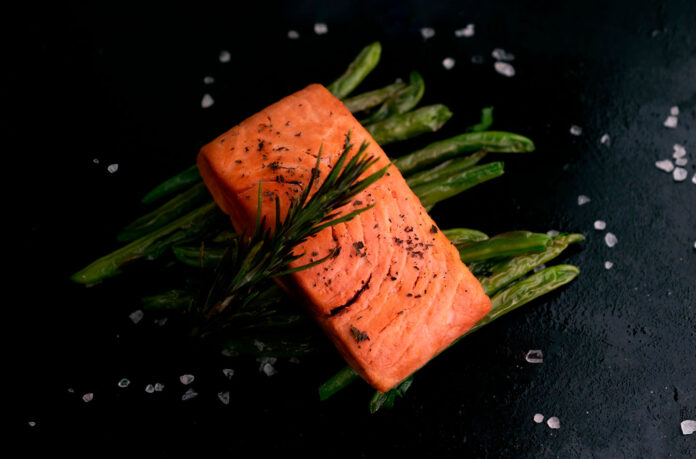This new innovation by the Food-Tech Startup is the first of its kind and can be considered a game-changer for plant-based alternatives. It is a so-called “whole cut”. The fillet resembles the structure and the texture of a conventional salmon fillet and can be prepared (fried, cooked, steamed…) just as conventional salmon.
While the first generation of plant-based alternatives often lacks structure (hamburgers, chicken nuggets), Generation 2.0 products redefine both the eating experience and the global vegan food market. These new products provide a next-level taste and texture through new technological innovation.
“It’s all about structure and creating the perfect bite.”
Robin Simsa, CEO of Revo Foods
Flexitarians – a growing market
More and more people are classing themselves as flexitarians to obtain a more sustainable diet. Flexitarians make up roughly 20% of the European population and the demand for plant-based alternatives is rapidly growing.
Also, industrial fishing has an image problem: Overfishing, the destruction of marine ecosystems and loss of ocean biodiversity are just some of them. Many consumers are deeply concerned about the dramatic increase of heavy metals, microplastics and antibiotics in conventional seafood products. Flexitarians are looking for sustainable alternatives that are good for the ocean and for their own health, but also provide the longed-for eating experience in taste and “bite”.
The Fillet
“The structure is almost “too perfect”, are you sure this is vegan?”
one of the guests quoted.
The base of the fillet is various plant-protein sources, such as pea proteins. Other ingredients include algae extracts and plant oils. The fillet has a high protein and omega-3 fatty acid content, similar to wild-caught salmon. Plant-based fish sticks or fish burgers have been available on the market for some time, but finding an alternative for a fish fillet is the next level. The fillet was served with asparagus and hollandaise sauce and prepared by chef Siegfried Kröpfl who has previously also cooked for Queen Elizabeth II (at Harbour Castle in Toronto).









